生鲜食品运送

Fruit and vegetables are living organisms, they respire even after harvesting. Respiration is part of the natural ripening process. During respiration, they generate heat and give off gases and moisture that will speed up deterioration as well.
Controlling the following factors can reduce deterioration of perishables:
Temperature Maintenance
Cooling the temperature is the most powerful and effective way to minimize deterioration. The faster the proper temperature is reached, the longer the expected life of the product. Cooling of fresh produce should begin as quickly as possible after harvest. Reefer containers should not be used to reduce the temperature of the cargo.
Instead, they are designed to maintain rather than to lower the temperature of the cargo. Therefore, precooling all perishable products immediately after harvest and before shipment or storage is essential. |
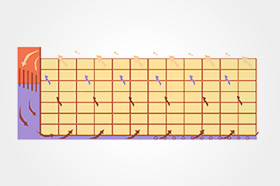 |
Humidity |
Ethylene |
Air Circulation |
| Relative humidity directly affects the quality of almost all products. If humidity levels are too low, fruits, vegetables and related products may wilt or shrivel. If relative humidity is too high, mold may develop to deteriorate the cargo. |
Another way to minimize deterioration is to remove the ethylene gas. Ethylene, a self-generating fruit- ripening regulator, is necessary for the ripening of fruits and vegetables. However, it can also cause damage to various fruits, vegetables if it is not controlled in minimal level. We can minimize and control its accumulation by adequate ventilation. |
Poor circulation can affect the commodity’s temperature, relative humidity and ethylene accumulation. If the air cannot circulate properly in the cold room or container, shelf life of the product will be definitely affected |
Package and loading pattern |
It is important that the packaging must allow air to circulate freely through the commodity, around the periphery of the container and in the area of the door.
The important criterion here is to have uniform distribution of air throughout the load. This requires the cargo to be uniformly stowed.
Different sized packaging obviously dictates different stacking patterns. The dimensions of loose cartons will inevitably not be sized to fit the container exactly so the resulting gap must be kept in proper location.
Don’t load pallets or cartons up to ceiling height, which will restrict air flow along the return air passage over the top of the cargo to the evaporator fan. Marine containers are marked with a height limit. This should never be exceeded.
Where dissimilar sized packaging is used, or cargoes do not fill the container fully, it is recommended that additional empty cartons or some other material is used to fill up the void space so that the airpassages remain uniform. In order to have optimal air circulation and cooling effect. It’s advisable to pack commodity with carton and make holes in carboard all sides.
Herewith commodity loading pattern illustrated for your reference ( Fig1 ~ Fig5 ) :
|
|
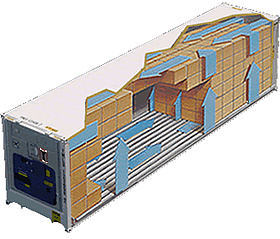 |
Fig1
Ideal commodity load pattern in reefer container.
|
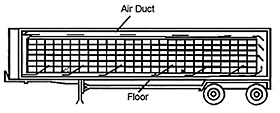 |
Fig3
Reefer container with bottom air delivery.
|
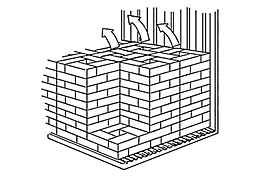 |
|
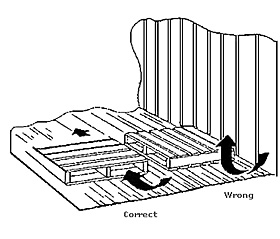 |
Fig2
Pallet stowage direction.
|
 |
Fig4
Reefer container with top air delivery.
|
Fig5
Carton stowage in chimney pattern.
|
|
Mixing Products |
| Mixing fresh products in a single reefer is very important in their compatibility. If carrying temperature is too low or too high to one product could cause cargo damage. |
|
Shipper should also be aware of the respiration levels and ethylene produced by the commodities at certain temperatures and maturity levels and their degree of tolerance or sensitivity to those ethylene. Yang Ming is glad to advise on suitable product mixes and you may refer to the Compatibility of Fresh Products table for further details. |
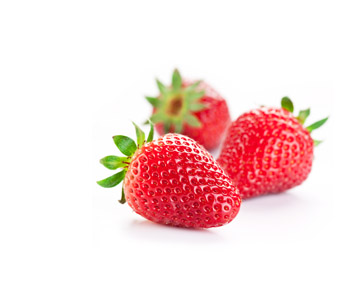 |








